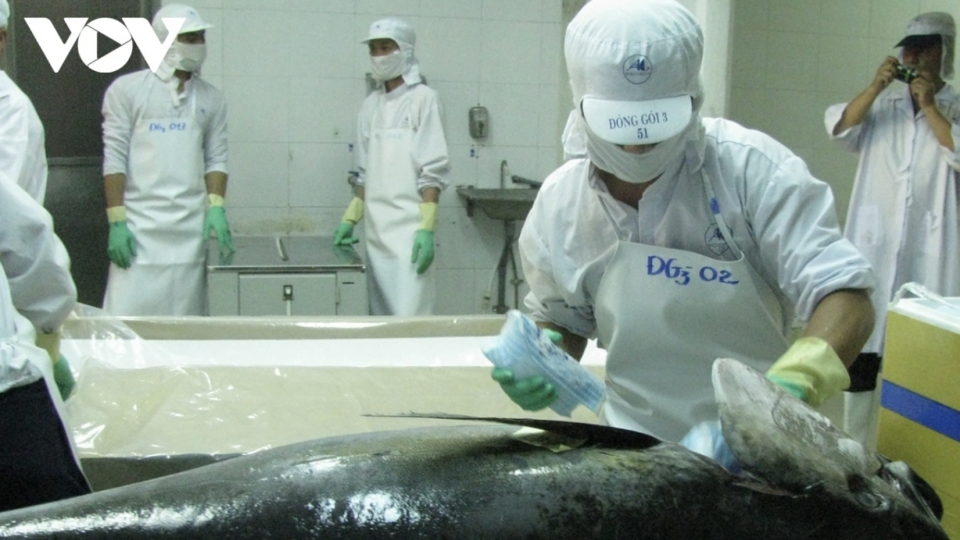Export decline clouds outlook for Vietnamese tuna in second half
VOV.VN -Vietnam’s tuna exports dropped 21% year-on-year in June to just over US$67 million, casting a shadow over the industry’s prospects for the remainder of 2025, according to the Vietnam Association of Seafood Exporters and Producers (VASEP).
Despite the sharp monthly decline, total tuna export turnover for the first half of the year edged up 0.2% to US$473 million, roughly matching last year’s figure.
VASEP attributed the June drop largely to concerns over potential new reciprocal tariffs from the US, prompting many exporters to suspend shipments. As a result, exports to the US fell 41% year-on-year in June to US$18 million. Still, the US remained Vietnam’s top tuna buyer, accounting for US$184 million, or nearly 39% of total export value in the first six months.
Shipments to the EU also slid 17% in June to nearly US$16 million, though cumulative first-half exports were slightly up, at US$109 million. Among key markets, the Netherlands and Italy recorded steep declines of 30% and 32%, while exports to Germany rebounded 36% following three months of contraction. A sluggish Southern European economy and high logistics costs continued to curb demand.
In contrast, exports to CPTPP markets rose 11% to US$62 million in the first half, led by Japan and Canada, which grew 24% and 15%, respectively, offering a rare bright spot amid overall weakening demand.
Exports to smaller markets like Israel, Russia, and Chile fell sharply, with shipments to Israel hampered by ongoing conflict in the Middle East.
Notably, Thailand emerged as a growth market, with exports soaring 137% to US$20 million, highlighting its role as a seafood processing and re-export hub.
VASEP cautioned that the industry faces increasing regulatory hurdles, including stricter fishing quotas, raw material separation rules, and complex documentation. Many exporters are relying more on imported tuna, thereby reducing the domestic content ratio and jeopardizing eligibility for EVFTA tariff preferences.
With these challenges, VASEP expects tuna exports to struggle in the second half, making it unlikely to reach 2024’s performance.





